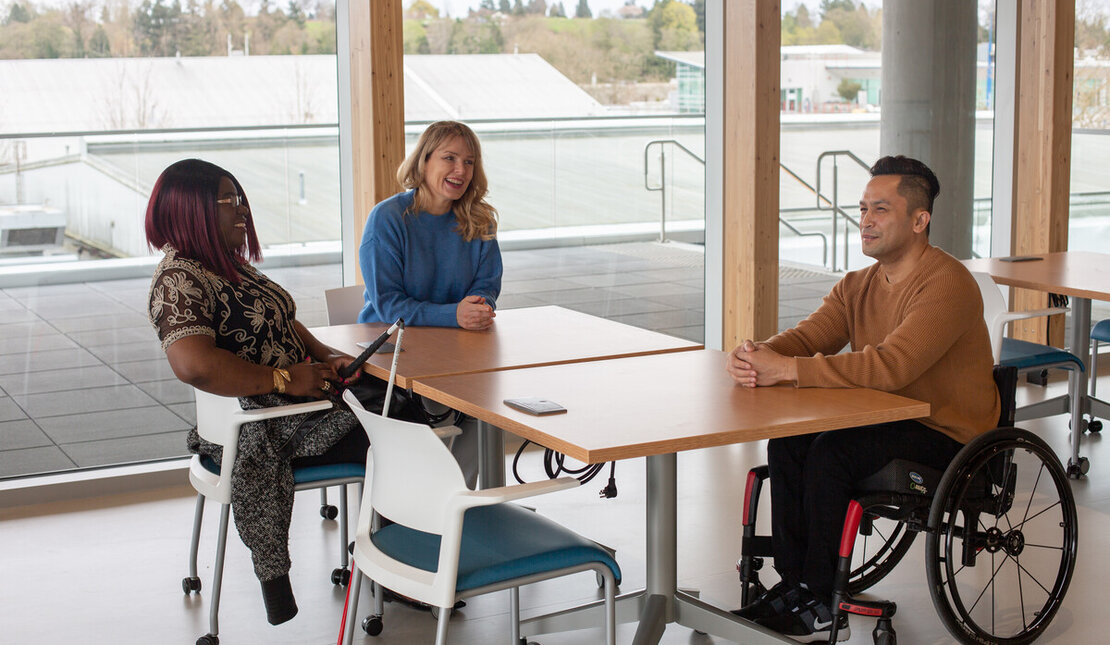
In the contemporary landscape, Breaking Barriers : technology stands as a formidable force, revolutionising every aspect of human existence. One of the most profound impacts of technology manifests in its transformative influence on mobility and disability. Through innovative solutions and groundbreaking advancements, barriers that once hindered the lives of individuals with disabilities are being shattered, paving the way for greater inclusivity and independence.
1. Technology as a Catalyst for Change
Technology has always been synonymous with progress, driving societal evolution and facilitating remarkable breakthroughs. In the realm of mobility and disability, its impact is nothing short of revolutionary. By harnessing the power of innovation, technology has become a beacon of hope like stair lift , offering solutions that empower individuals to transcend physical limitations and embrace life to its fullest.
2. The Evolution of Mobility Assistance Devices
From Wheelchairs to Exoskeletons: Advancements in Mobility Aid
The evolution of mobility assistance devices exemplifies the relentless pursuit of innovation in enhancing accessibility and freedom of movement. From traditional wheelchairs to cutting-edge exoskeletons, technological advancements have redefined the concept of mobility assistance, offering tailored solutions that cater to diverse needs and preferences.
3. Accessibility in Transportation
Rise of Adaptive Vehicles
The landscape of transportation is undergoing a profound transformation, with a growing emphasis on accessibility and inclusivity. Adaptive vehicles equipped with ramps, lifts, and other assistive features are enabling individuals with disabilities to travel with unprecedented ease and convenience, breaking down barriers to mobility and independence.
Integration of Assistive Technologies in Public Transport
Public transport systems are increasingly integrating assistive technologies to accommodate the needs of passengers with disabilities. From audio announcements and tactile signage to wheelchair-accessible buses and trains, these innovations are fostering a more inclusive environment where everyone can navigate urban spaces with confidence and dignity.
4. Smart Solutions for Independent Living
Home Automation for Persons with Disabilities
The advent of smart home technology has revolutionised standing wheelchair independent living for individuals with disabilities. From voice-activated assistants to automated lighting and temperature control systems, these innovations empower individuals to manage their living environments with greater efficiency and autonomy, enhancing overall quality of life.
Wearable Devices Enhancing Mobility
Wearable devices are playing a pivotal role in enhancing mobility and safety for individuals with disabilities. From GPS-enabled navigation aids to fall detection and emergency alert systems, these wearable technologies provide peace of mind and reassurance, enabling users to explore the world with confidence.
5. Breaking Down Barriers to Communication
Innovations in Augmentative and Alternative Communication (AAC)
For individuals with speech or language impairments, augmentative and alternative communication (AAC) technologies offer a lifeline to expression and connection. From text-to-speech software to specialized communication devices, these innovations empower individuals to communicate effectively, breaking down barriers and fostering meaningful interactions.
6. The Empowering Potential of Virtual Reality
VR for Rehabilitation and Therapy
Virtual reality (VR) technology is revolutionizing rehabilitation and therapy for individuals with mobility impairments. Through immersive experiences and interactive simulations, VR enables users to engage in tailored exercises and activities that promote physical recovery and functional independence, opening new avenues for rehabilitation.
Enhanced Accessibility in Virtual Environments
The accessibility features of virtual reality platforms are making virtual environments more inclusive and accommodating for individuals with disabilities. From customizable interfaces to gesture-based controls and audio descriptions, these accessibility enhancements ensure that everyone can participate fully in virtual experiences, regardless of physical or cognitive abilities.
7. Overcoming Cognitive Challenges
Assistive Apps and Software
Assistive apps and software are empowering individuals with cognitive disabilities to overcome everyday challenges and maximize their potential. From task management tools to cognitive training apps, these digital solutions offer personalized support and assistance, helping users navigate complex tasks with confidence and independence.
AI-Powered Solutions for Cognitive Disabilities
Artificial intelligence (AI) is driving innovation in the field of cognitive support, offering personalized solutions that adapt to individual needs and preferences. From predictive text and smart reminders to virtual assistants capable of understanding and responding to natural language commands, these AI-powered solutions are revolutionizing the way individuals with cognitive disabilities interact with technology and the world around them.
8. Conclusion: Embracing a More Inclusive Future
As technology continues to advance at an unprecedented pace, the barriers that once separated individuals with disabilities from full participation in society are rapidly diminishing. Through innovation, collaboration, and a shared commitment to inclusivity, we have the opportunity to create a future where disability is not a limitation but a unique aspect of human diversity. By harnessing the transformative power of technology, we can break down barriers, empower individuals, and build a more inclusive world for all.
FAQs
- How is technology improving accessibility in transportation?
- Technology is improving accessibility in transportation through the development of adaptive vehicles equipped with ramps, lifts, and other assistive features, as well as the integration of assistive technologies in public transport systems.
- What role do wearable devices play in enhancing mobility for individuals with disabilities?
Wearable devices play a crucial role in enhancing mobility for individuals with disabilities by providing features such as GPS navigation, fall detection, and emergency alerts, which contribute to greater safety and independence.- How are AI-powered solutions benefiting individuals with cognitive disabilities?
AI-powered solutions are benefiting individuals with cognitive disabilities by offering personalized support and assistance through features such as predictive text, smart reminders, and virtual assistants capable of understanding natural language commands.- What are some examples of assistive technologies for communication?
- Examples of assistive technologies for communication include text-to-speech software, specialized communication devices, and augmentative and alternative communication (AAC) apps, which help individuals with speech or language impairments express themselves effectively.
- How is virtual reality (VR) being used in rehabilitation and therapy?
- Virtual reality (VR) is being used in rehabilitation and therapy to create immersive experiences and interactive simulations that facilitate physical recovery and functional independence for individuals with mobility impairments.





